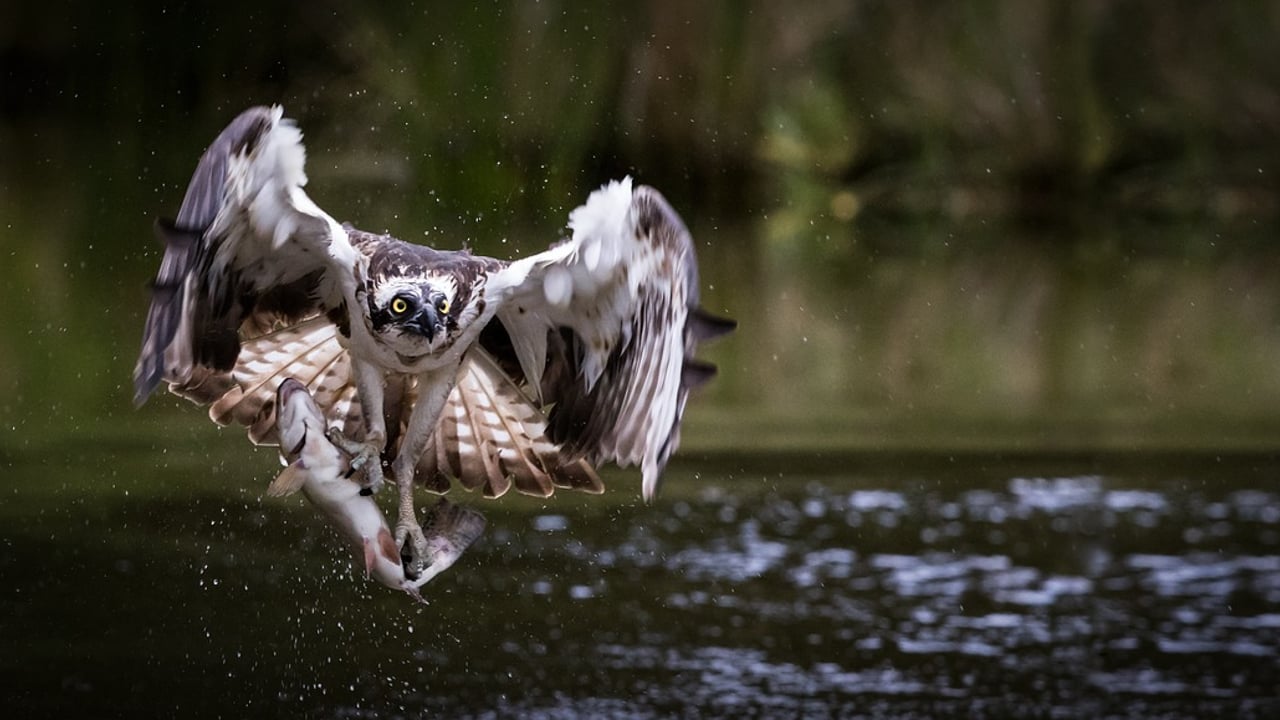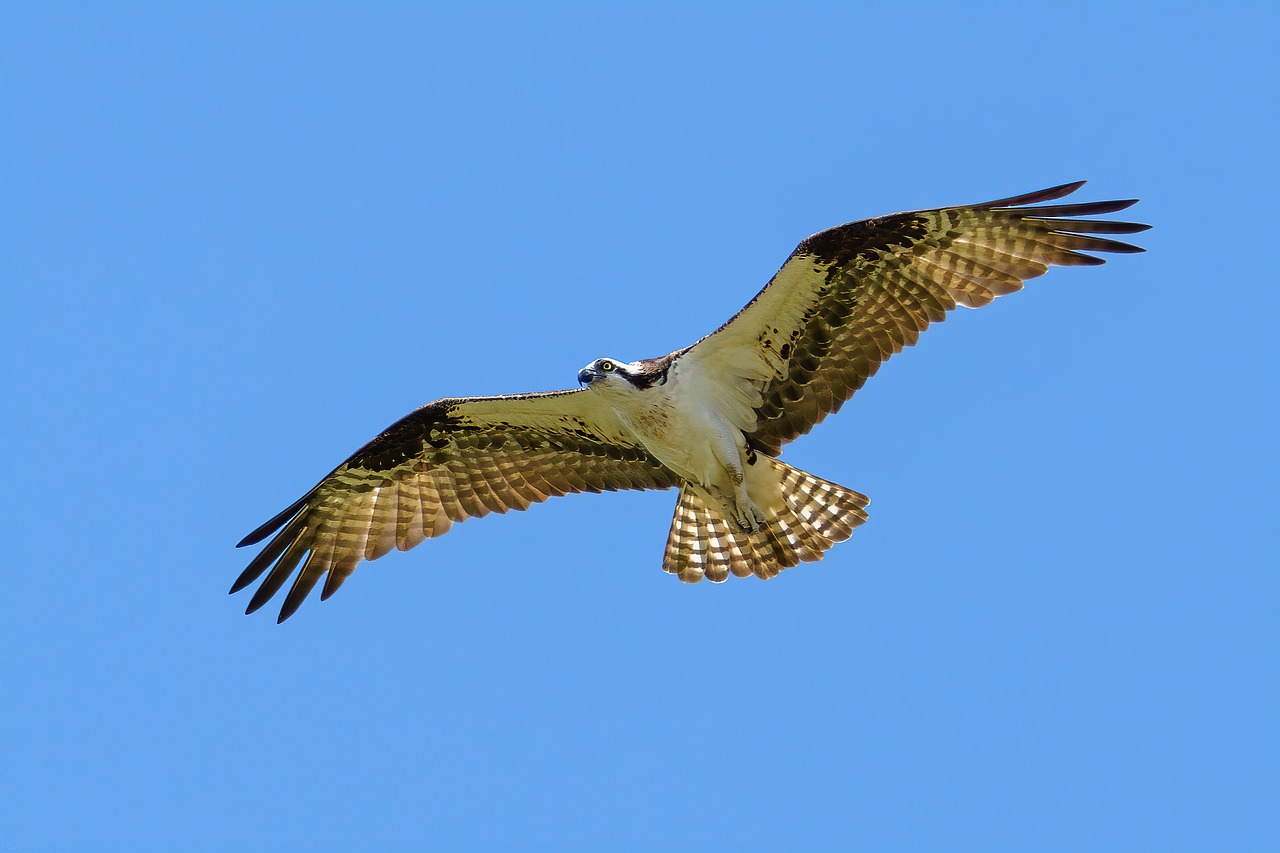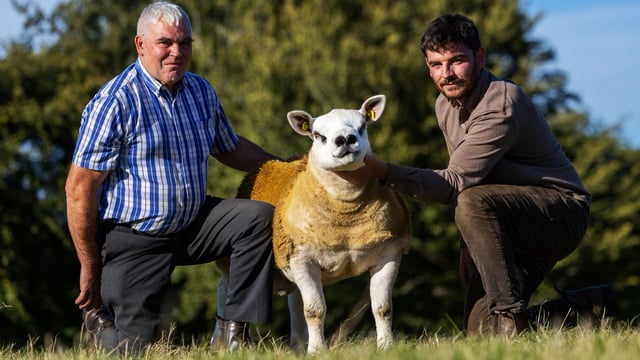19 osprey chicks arrive in Ireland to be released as part of reintroduction programme
A programme aiming to establish a viable population of ospreys breeding in Ireland is now in its third year.
Ospreys were once part of the Irish landscape and ecosystems, but unfortunately, this bird of prey became extinct.
It is thought that they became extinct as breeding birds in this country over 150 years ago, but continued to visit the island as part of their migratory pattern.
The National Parks and Wildlife Service's (NPWS) five-year reintroduction programme began in 2023.
Now in its third year, the NPWS is preparing to release 19 osprey chicks into the wild, with nine chicks released in both 2024 and 2023 in Co. Waterford.
Ospreys are fish-eating birds of prey which need habitats close to rivers, lakes or coastal areas ensuring a sufficient supply of fish, the NPWS said.
As a result, Ireland is thought to provide the perfect conditions for the chicks.
Ospreys are known to be monogamous and faithful to both their mate and their nest.
Dr. Philip Buckley of the NPWS, who heads up the osprey reintroduction programme, said there have been ongoing efforts to reintroduce species such as the osprey and white-tailed eagle to Ireland for a number of reasons, especially to improve biodiversity.
He explained that ospreys became extinct at a time when people's view of birds of prey was that they were bad and should be eliminated, and that the osprey may have been viewed as a threat to the supply of fish.
The osprey is a specialist feeder, relying on medium-sized fish, both marine and fresh water.
The bird will fly above the water’s surface to locate fish, sometimes gliding and soaring up to 70 metres high.
Dr. Buckley said that to restore any species in a country, a detailed analysis must be done to see if the factors that caused extinction are still present.
"We looked at that and we concluded that people's attitudes have changed," he told Agriland.
"We looked at if the habitat is still suitable, if the food supply is still suitable.
"We basically concluded the cause of extinction doesn't pertain anymore and it would be likely the species would survive if they were reintroduced."
The osprey is a "medium-sized bird", and occurs on most continents.
Dr. Buckley said the birds that breed in north-western countries in Europe, be that Ireland, Britain or Norway, generally migrate to Africa for the winter months.
They would typically return to countries like Ireland around April, set up territories and rear their young, before setting off to the warmer climate in September.
When the NPWS was determining how many chicks should be released each year to get a population that could become self-sustaining, factors such as the life length, number of offspring produced, and mortality rates were considered.
It was decided that around 50 to 60 osprey chicks should be brought in over the five years with the aim of establishing a population of ospreys eventually breeding in Ireland.
This is now year three of the programme, and 19 chicks have been brought to Ireland from two locations in Norway in July this year to be released soon.
The birds were caught in Norway before they can fly, but at an advanced enough stage that they will survive and are easier to look after, according to Dr. Buckley.
They are in holding pens since being brought to Ireland, with a platform simulating a nest, and are fed around three times a day currently, but without seeing humans - "the whole idea is they don't see humans and don't associate us with food".
Dr. Buckley said that it will become apparent when the birds are ready to fly by their behaviour.
"When they come in first, you can see they might spend more time sleeping. As they get a bit older they'll move out onto the branches or perches, and then maybe after another week they'll start flapping the wings and exercising them, and then you know well these birds are getting ready to fly.
"We'll open the pens and let them out, and most of them will fly within three hours, and we do put out food around the area where we've held them.
"The idea is to provide them with a food supply because they have no adults to teach them how to fish, so to provide them with something to transition them from being looked after by us to then looking after themselves.
"Usually they'll find that food source and stay there until they're ready to migrate sometime in September."
Ospreys breed from around three years of age.
In the first year they migrate to Africa, they most likely won't return to Ireland or other European countries. They will spend that first summer in Africa, and return in the second or third year.
Dr. Buckley said it will be next year when it will really be known if any of the birds released in the first year of the programme have survived and made their way back.
"They have to cross large areas of ocean, the Sahara Desert, so the mortality rate is quite high."
The percentage that come back could be between 10% and 30%, it is estimated.
Dr. Buckley expressed his gratitude to farmers for their cooperation with and support for the reintroduction programme, with the pens holding the birds constructed at two sites on farmland.






